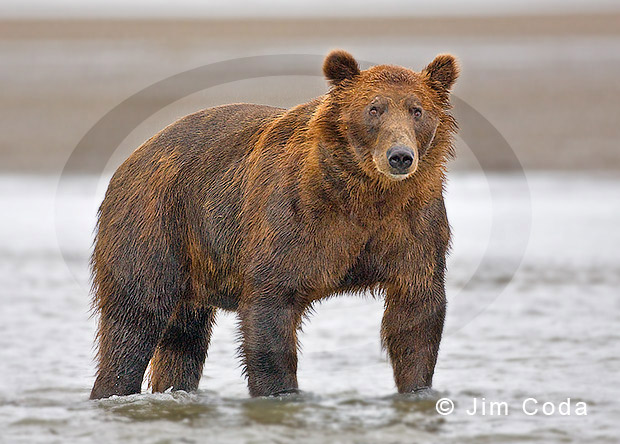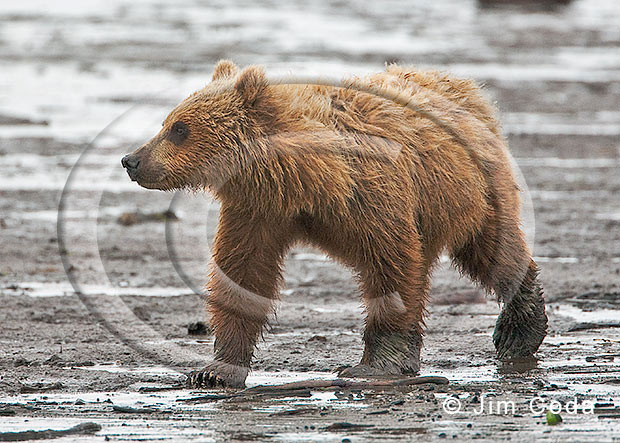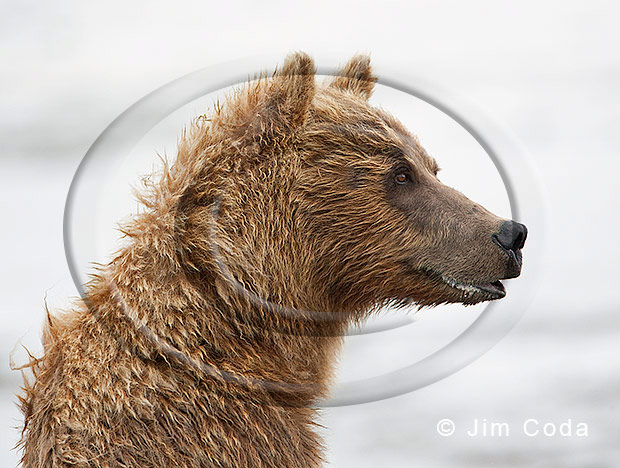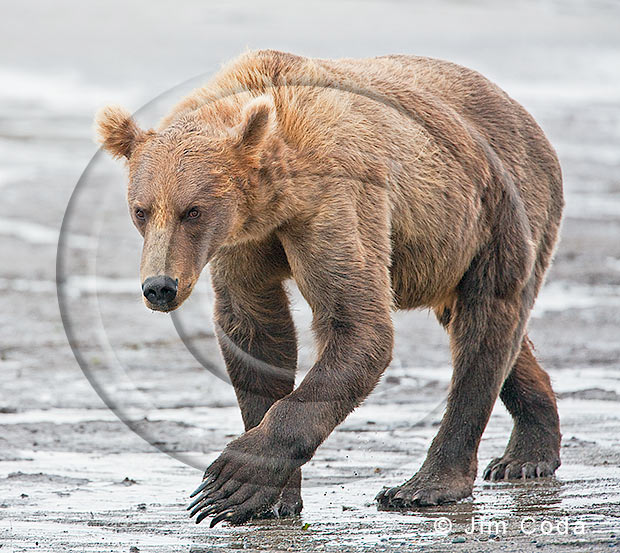Brown Bear, Lake Clark National Park

A female brown bear roams the tidal flats hunting for clams near Silver Salmon Creek in Lake Clark National Park.
This site is dedicated to wildlife and landscape photography.

A female brown bear roams the tidal flats hunting for clams near Silver Salmon Creek in Lake Clark National Park.

A brown bear munches on sedge grass in Lake Clark National Park. I’m not sure why it is that brown bears, at least where they are routinely photographed, pretty much ignore humans. I don’t know of any distance rules regarding the bears in Lake Clark. Of course, there was the famous case of Timothy Treadwell, a brown bear activist who, along with his girlfriend, was killed by a male brown bear in 2003.

Brown Bear, Lake Clark National Park
This is a photo from a few years ago in Lake Clark National Park. This female brown bear was feeding on sedge grass, a very important food source until the salmon spawning runs begin. Her cub was just out of the photo.

Brown Bear Takes a Break
I was with a few others photographing this female brown bear while she was fishing. The silver salmon run hadn’t begun yet at Silver Salmon Creek, but that didn’t stop her from giving it a try. She caught a starry flounder and then, after a while, a silver salmon. A larger male bear was also fishing and catching nothing. When she caught the salmon he chased her for several minutes and she was holding onto the fish so hard that one or both ends fell to the ground. That caused the male to stop. After the chase she walked toward us. She kept coming and finally stopped and plopped down not far from our feet.
She had a reputation as a very good fisher. She also had a rep that wasn’t as nice. She abandoned her year-old cub not long before this. We would see it on occasion and hoped and prayed it would make it to and through hibernation.

I was in Alaska recently. I spent the first week of this month photographing brown bears in Lake Clark National Park. If you’re interested in photographing brown bears, Lake Clark is a good place to go and Silver Salmon Creek Lodge (SSCL), where I stayed, offers excellent accommodations. In fact, the lodge provides full services, including meals/lodging, flights to and from the lodge and a guide. My guide, Jim, has an M.S. in Wildlife Biology and his thesis involved bears. SSCL is already taking reservations for 2019, but I think it still has some openings for 2018. The lodge is about 100 air miles southwest of Anchorage. http://silversalmoncreek.com/
If you’re thinking of going, you may be wondering when is the best time? That depends. I’ve been there the first and last weeks of July. My understanding of what happens there in June, July and August follows.
June. June is mating season. I understand most of the big boars leave the area by the end of June. Also, the ones that remain into July have lost their luxuriant winter coats by the end of June, if not before. What kinds of foregrounds and backgrounds will you have to photograph the bears in in June? The bears will be feeding primarily on sedge grass, which I like to photograph them in. They will also be feeding on razor clams when the tide is very low. That’s another setting I like.
July. It’s my understanding that the sows with cubs, at least spring cubs, don’t arrive until the big boars have left. Boars kill and eat cubs. So, if you want to photograph cubs, July is a good time. When I was there this year most of the sows and all of the cubs still had their winter coats. The foregrounds and backgrounds you will have will be the same as in June.
August. In August, the silver salmon/coho start migrating up Silver Salmon Creek. The bears will focus on eating as many of them as they can to fatten up for the long winter. The big boars may return at this time, but you should check with the lodge on that (plus everything else I’ve said). I don’t know what the color of the sedge grass is in August, but I’m guessing it would still be green. I don’t think I need to describe the setting for the bears standing in the creek trying to catch salmon. There are no falls, at least at the lower end of the creek, so don’t expect to photograph bears standing at the top of some falls with their mouths wide open catching jumping salmon, like McNeil Falls is famous for. But you won’t have to fight with hordes of people either.

When I look at this boar I think of Jim Croce’s great song, “Bad, Bad Leroy Brown.” This guy was the biggest male brown bear I saw in my week at Silver Salmon Creek. Note the size of his shoulders and chest compared to the boar that was following the sow and cub in my last post. He has an old scar above his right eye.
In the last post I showed a mother brown bear who I said looked concerned. I had reason to think she looked concerned because of what I saw outside the frame of the image. She and her cub were being followed by a boar. Here’s a photo of her cub. It doesn’t look the least concerned. In fact, it looks happy or at least content.

Mom is getting increasingly concerned though. The male bear has gained some ground on them thanks to the cub’s dawdling. She’s starting to foam at the mouth which bears do when they get agitated.

The cub sees that mom is looking a bit agitated so it looks around to see what’s going on. It doesn’t like what it sees.

At this point mom decided a stroll along the beach wasn’t a good idea and she and her cub picked up the pace and headed inland. Fortunately, the boar didn’t follow them.

This guy wasn’t the biggest boar I saw at Silver Salmon Creek, but he’s still pretty muscular. I wouldn’t want him following me. In human terms I’d guess him to be about a 16 to 18 year teenager. He still has that kind of “dog-like” head. It will get much wider. Also, note how short his coat is compared to mom and her cub. These photos were taken the last week in July. By then the males have lost most or all of their winter coats.
